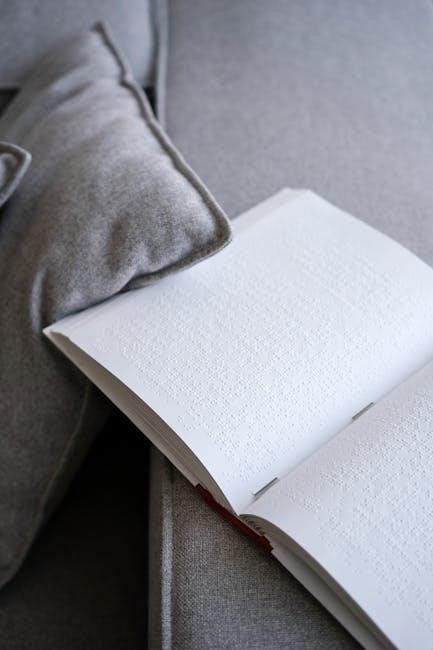A well-fitting dress shirt is the foundation of a polished wardrobe. Understanding key measurements ensures comfort, style, and professionalism. Proper fit enhances confidence and appearance, making it essential to master the basics of dress shirt sizing for a tailored look.
Understanding the Importance of Proper Fit
A proper fit in a dress shirt is crucial for both style and comfort. It ensures the shirt moves naturally with the body, avoiding restrictive tightness or unflattering looseness. A well-fitting shirt enhances posture, confidence, and professionalism, creating a polished appearance. Ill-fitting shirts can cause discomfort and detract from overall style. Understanding measurements helps tailor the shirt to individual body types, ensuring a seamless drape and optimal mobility. Proper fit is the cornerstone of a sharp, put-together look, making it essential to prioritize accurate measurements and sizing.
Overview of Key Measurements
Key measurements for dress shirts include neck, chest, sleeve length, shoulder width, and shirt length. These dimensions ensure a tailored fit, balancing comfort and style. The neck measurement determines the collar size, while the chest measurement ensures ease of movement. Sleeve length affects both appearance and functionality, and shoulder width aligns with the body’s structure. Shirt length impacts the overall silhouette and tucking ability. Accurate measurements guide size selection, ensuring the shirt drapes naturally and moves effortlessly with the body, creating a polished and professional look tailored to individual proportions.

Key Measurements for Dress Shirts
Key measurements include neck, chest, sleeve length, shoulder width, and shirt length. These dimensions ensure a tailored fit, balancing comfort and style for a polished appearance.
Neck Measurement
The neck measurement is crucial for a comfortable fit. It determines the collar size, ensuring the shirt sits smoothly without being too tight or loose. To measure, wrap a flexible tape around the base of the neck, keeping it level and not too snug. The measurement should allow for one finger to fit comfortably between the tape and the neck. This ensures the collar won’t restrict movement or dig into the skin, providing all-day comfort and a professional appearance.
Chest Measurement
The chest measurement is a key factor in determining a dress shirt’s fit. It is taken around the widest part of the torso, typically just under the armpits. The tape should be level and not too tight, ensuring comfort and mobility. This measurement helps determine how much room the shirt will have through the body. A proper chest measurement ensures the shirt drapes smoothly and allows for a full range of motion. Accurate measurement is essential for achieving a balance between a comfortable fit and a polished appearance.
Sleeve Length Measurement
Sleeve length is measured from the center of the back neck to the wrist, with the arm slightly bent. This ensures the cuff sits correctly, neither too short nor too long. Proper sleeve length balances comfort and style, allowing ease of movement while maintaining a polished appearance. Accurate measurement is crucial to avoid sleeves that restrict motion or appear ill-fitting. It’s a key detail that, when done right, enhances both functionality and aesthetic appeal of the dress shirt.
Shoulder Width Measurement
Shoulder width is measured across the back, from one shoulder tip to the other, ensuring the shirt sits comfortably without strain. Proper shoulder fit prevents the fabric from pulling or sagging, maintaining a balanced appearance. Accurate measurement is vital, as ill-fitting shoulders can disrupt the entire fit. This measurement, combined with chest and sleeve length, ensures the shirt drapes naturally, offering both comfort and a polished look. It’s a critical factor in achieving a tailored fit that flatters the body and enhances overall style.
Shirt Length Measurement
Shirt length is measured from the base of the collar to the hem to ensure the shirt stays tucked in and maintains a polished look. Proper length prevents the shirt from being too short or too long, ensuring it drapes neatly over the torso. Accurate measurement is crucial for both style and functionality, as it affects how the shirt fits when tucked into trousers or worn untucked. A well-measured shirt length enhances comfort and aesthetics, contributing to a professional and put-together appearance.

Types of Fit in Dress Shirts
Dress shirts come in various fits to suit different body types and preferences. Slim, Classic, Regular, Modern, and Tailored fits offer distinct styles, ensuring a flattering and comfortable choice for every individual.
Slim Fit
A slim-fit dress shirt is tailored to hug the body closely, offering a contemporary and streamlined appearance. It features higher armholes for a more fitted silhouette and a narrower chest and sleeve design. This style is ideal for those with a lean or athletic build, as it accentuates a slimmer physique without restricting movement. To ensure the best fit, precise measurements are crucial, particularly around the neck and chest. Slim-fit shirts are popular for their modern aesthetic, making them a versatile choice for both formal and semi-formal occasions.
Classic Fit
A classic-fit dress shirt offers a traditional and timeless silhouette with a generous cut through the chest and body. It features broader shoulders and slightly fuller sleeves, providing a comfortable fit for a wide range of body types. This style is ideal for those who prefer a relaxed yet professional appearance. The classic fit strikes a balance between comfort and style, making it suitable for formal and business-casual settings. It is particularly flattering for individuals with a larger or more athletic build, ensuring ease of movement while maintaining a polished look.
Regular Fit
A regular-fit dress shirt offers a balanced silhouette, providing extra room through the chest and body compared to slim-fit styles. It features broad shoulders and moderate sleeve volume, creating a comfortable yet professional appearance. This fit is ideal for individuals with average builds or those who prefer a relaxed yet tailored look. Regular-fit shirts are versatile, suitable for both formal and business-casual settings, and cater to a wide range of body types without feeling overly tight or boxy. They strike a perfect middle ground between slim and classic fits, ensuring ease of movement while maintaining a polished aesthetic.
Modern Fit
The modern-fit dress shirt offers a tailored yet contemporary silhouette, blending style and comfort. It is slightly slimmer than the classic fit but not as tight as the slim fit, providing a balanced look. Key features include a fitted chest, narrower sleeves, and a shorter shirt length for a streamlined appearance. This fit is ideal for those seeking a fashionable yet professional look, suitable for various body types and occasions. The modern fit strikes a perfect balance between traditional and trendy, ensuring a sharp, put-together appearance without sacrificing ease of movement.
Tailored Fit
A tailored-fit dress shirt offers a sharp, professional look with a custom-like precision. Designed for a streamlined silhouette, it features a slightly slimmer cut than the classic fit but remains comfortable. The tailored fit emphasizes precise measurements, ensuring the shirt skims the body without being too tight. It is ideal for formal occasions or business settings, providing a polished appearance. This fit is perfect for those who want a balance between style and comfort, making it suitable for a variety of body types while maintaining a sophisticated, put-together look.
How to Measure for a Dress Shirt
Use a flexible tape measure to accurately capture neck, chest, sleeve length, shoulder width, and shirt length. Ensure a snug fit for precise measurements and a perfect fit.
Measuring the Neck
Measuring the neck is crucial for a dress shirt fit. Stand upright and place the tape measure around the base of your neck, where the collar sits. Keep the tape snug but not tight, ensuring it’s parallel to the floor. The measurement should be taken without any twists or gaps. This ensures the collar fits comfortably, neither too loose nor too tight. Proper neck measurement is the starting point for a well-fitting dress shirt, impacting both comfort and appearance.
Measuring the Chest
Measuring the chest ensures a dress shirt fits comfortably and stylishly. Stand straight and place the tape measure under your armpits, across the fullest part of your chest. Keep the tape level and snug but not tight. The measurement reflects the shirt’s chest size, ensuring it drapes well without restriction. For stretch fabrics, allow a bit of ease, while non-stretch fabrics require a precise fit. Accurate chest measurement is vital for both comfort and style, ensuring the shirt moves naturally with your body.
Measuring Sleeve Length
Measuring sleeve length ensures a balanced and comfortable fit. Start at the base of the neck, just below the Adam’s apple, and measure straight down to the wrist with arms slightly bent. The tape should follow the natural curve of the shoulder and arm. This measurement determines where the cuff will sit, ensuring proper proportions. For a slim fit, sleeves may be slightly shorter, while classic fits offer a bit more length. Accurate sleeve length ensures the shirt drapes naturally and maintains a polished appearance.
Measuring Shoulder Width
Measuring shoulder width ensures the shirt fits comfortably across the upper body. Stand straight and measure from the tip of one shoulder to the tip of the other, across the back. This measurement helps determine how the shirt will sit on your frame. A proper shoulder fit prevents the shirt from being too tight or too loose, ensuring a balanced appearance. Use a flexible tape measure for accuracy, keeping your arms relaxed by your sides. This step is crucial for achieving a tailored look and optimal comfort in your dress shirt.
Measuring Shirt Length
Measuring shirt length ensures the hem sits appropriately on your body. Stand straight and measure from the base of the neck down to your desired shirt length, typically just above the hip or mid-fly for a standard fit. Keep the tape measure straight and level, avoiding twists. This measurement ensures the shirt drapes correctly, providing comfort and style. Proper shirt length prevents the shirt from being too short or overly long, maintaining a balanced and polished appearance. Accuracy here is key for a flattering fit.

Using a Dress Shirt Size Chart
A dress shirt size chart simplifies finding your perfect fit by correlating key measurements like neck, chest, and sleeve length to standard sizes, ensuring accuracy and comfort.
Understanding Numeric and Alpha Sizing
Dress shirts use two main sizing systems: numeric and alpha. Numeric sizing combines neck and chest measurements, while alpha sizing (S, M, L) offers a broader fit range. Numeric sizing is precise, ideal for tailored fits, whereas alpha sizing is more general. Understanding these systems helps in selecting the right size, ensuring comfort and style. Different brands may favor one system over the other, so comparing measurements is crucial for accuracy. This knowledge ensures a perfect fit, whether opting for slim, classic, or tailored styles.
Interpreting Size Charts
Size charts provide a detailed guide to dress shirt sizing, listing measurements for neck, chest, sleeve length, and shirt length. These charts help match body measurements to corresponding sizes, ensuring a precise fit. Numeric and alpha sizes are clearly outlined, along with fit styles like slim, classic, or tailored. By comparing personal measurements to the chart, individuals can determine their ideal size and fit. Accurate interpretation ensures comfort, style, and a professional appearance, making size charts an essential tool for selecting the perfect dress shirt.
Brand Variations in Sizing
Brand variations in sizing can make selecting the right dress shirt challenging. Different brands may interpret fit styles, such as slim or classic, differently. Some brands offer more tailored cuts, while others provide a looser fit. Measurements like chest and sleeve length may also vary slightly between brands. Understanding these differences is crucial for achieving the perfect fit. Always refer to the specific brand’s size chart and consider their fit style when making a purchase. This ensures accuracy and comfort, as sizing can differ significantly across brands.

Common Mistakes in Measuring
Common mistakes include incorrect neck, chest, and sleeve measurements. Using a flexible tape measure and ensuring proper posture helps achieve accurate results for a perfect fit.
- Incorrect neck measurement
- Improper chest measurement
- Erroneous sleeve length measurement
Incorrect Neck Measurement
Incorrect neck measurement is a common issue that can ruin the fit of a dress shirt. Measuring too tightly or loosely leads to discomfort and an unflattering appearance. The tape measure should sit comfortably around the base of the neck, allowing one finger to fit snugly underneath. If the measurement is too tight, the collar will feel restrictive. Conversely, a loose measurement results in a collar that gaps open. Ensuring the tape measure is level and not twisted is crucial for accuracy. Proper neck measurement is the foundation of a well-fitting dress shirt.
- Measure around the base of the neck.
- Allow one finger to fit snugly underneath.
- Keep the tape measure level and untwisted.
Improper Chest Measurement
Improper chest measurement can significantly affect the fit of a dress shirt. Measuring too tightly may result in a shirt that feels constricting, while too loose a measurement can cause the fabric to sag unflatteringly. The tape measure should be snug but not restrictive, allowing for a full range of motion. Proper chest measurement ensures the shirt drapes smoothly across the torso, providing both comfort and a polished appearance. Accuracy is key to avoiding a shirt that is either too tight or overly baggy.
- Measure around the broadest part of the chest.
- Keep the tape measure level and parallel to the floor.
- Ensure the fit allows for comfortable movement.
Erroneous Sleeve Length Measurement
Incorrect sleeve length measurement can lead to a poor fit, affecting both comfort and appearance. If the sleeves are too short, the shirt may look ill-fitting, while overly long sleeves can appear bulky. Proper measurement involves placing the tape measure from the center back of the neck to the wrist, with the arm slightly bent. Common mistakes include not keeping the arm straight or bending the elbow too much, which can result in inaccurate sizing. Ensuring precise sleeve length ensures the shirt hangs correctly and maintains a balanced, polished look.

Importance of Fabric in Fit
Fabric weight and stretch significantly impact fit. Lighter fabrics drape smoothly, while heavier ones provide structure. Stretch fabrics offer flexibility, enhancing comfort and movement without compromising style.
How Fabric Weight Affects Fit
Fabric weight significantly influences how a dress shirt fits and drapes. Lighter fabrics, like cotton voile, provide a soft, breathable feel and a relaxed drape, ideal for warm weather. Medium-weight fabrics, such as Oxford cotton, strike a balance between structure and comfort, making them versatile for most occasions. Heavier fabrics, like twill or denim, offer a more substantial feel and sharper creases, enhancing a formal appearance. The right fabric weight ensures both comfort and style, tailored to the wearer’s needs and preferences.
Stretch vs. Non-Stretch Fabrics
Stretch fabrics, such as those with elastane, offer enhanced flexibility and comfort, allowing for a full range of motion. They hug the body slightly, providing a modern, fitted look while maintaining ease. Non-stretch fabrics, like traditional cotton, offer structure and a classic drape, ideal for formal settings. Stretch fabrics are perfect for active lifestyles, while non-stretch options suit more traditional or formal wear. Choosing the right fabric type depends on personal preference, lifestyle, and the desired aesthetic, ensuring optimal comfort and style.

Brand-Specific Sizing Variations
Brands often tailor sizing to their fit philosophy, with variations in chest, shoulder, and sleeve measurements. Understanding these differences is key to finding your perfect fit.
Understanding Different Brands’ Fits
Each brand offers unique fits, such as slim, classic, or tailored, catering to various body types and style preferences. Slim fits are narrower, while classic fits provide more room. Some brands emphasize broader shoulders or longer sleeves, ensuring comfort and aesthetics. Researching a brand’s fit style helps in selecting the most flattering option. Understanding these variations allows for a more accurate size selection, ensuring the shirt aligns with personal comfort and desired appearance.
Adjusting Measurements for Brand Differences
Since brands vary in sizing, it’s crucial to adjust measurements accordingly. Compare size charts across brands to account for differences in fit styles. For instance, a slim fit from one brand may differ from another. Consider sleeve length, chest measurements, and shoulder width to ensure accuracy. If a brand runs large or small, adjust your size selection. Trying on shirts or using flexible tape can help refine fit. Understanding brand-specific sizing ensures a more tailored and comfortable result, even as you explore different labels and styles.

Trying On Dress Shirts
Trying on dress shirts ensures a perfect fit, comfort, and style. Assess how the fabric drapes, moves, and aligns with your body contours for a polished look.
How to Assess Fit When Trying On
When trying on a dress shirt, ensure the collar rests comfortably around your neck without gaping or feeling tight. The chest should drape smoothly, with buttons lying flat. Sleeves should reach the wrist bone, allowing ease of movement. Shoulder seams should align with your natural shoulder line, avoiding drooping or tightness. The shirt length should be long enough to stay tucked but not overly bulky; Fabric should move naturally with your body, providing a polished, tailored appearance without restriction.
Checking for Proper Drape and Movement
Proper drape ensures the fabric hangs smoothly without wrinkles or sagging. When moving, the shirt should allow unrestricted arm movement and maintain its shape. Check that the sleeves don’t restrict your arms and the body doesn’t pull or ride up. The collar should stay aligned, and the shirt should drape evenly across the chest and shoulders. A good fit balances structure and flexibility, ensuring both style and comfort. Always button the shirt and move naturally to assess how it performs with your body’s movements.

Style Considerations
Style considerations balance fit and aesthetics, offering versatility through various collar styles and cuff options. These elements enhance both visual appeal and comfort, ensuring a polished look.
Choosing the Right Collar Style
Selecting the right collar style enhances your dress shirt’s aesthetic and functionality. Point collars suit narrower faces, while spread collars complement wider faces. Button-down collars offer a casual yet versatile look, ideal for everyday wear. Cutaway collars provide a modern, sleek appearance, pairing well with slim ties. Club collars add a vintage touch, perfect for unique styling. Consider your face shape, personal style, and occasion to choose the most flattering collar. Coordinating the collar with cuffs and overall fit ensures a cohesive, polished look that elevates your professional or casual ensemble;
Cuff Style and Fit
Cuff style significantly impacts a dress shirt’s appearance and functionality. Button cuffs are versatile and suitable for most occasions, while French cuffs add elegance, requiring cufflinks. Barrel cuffs offer a streamlined look, ideal for casual settings. Ensure cuffs fit snugly around the wrist without restricting movement. Proper cuff fit enhances comfort and style, complementing the shirt’s overall design. Choosing the right cuff style and ensuring a precise fit contribute to a polished, tailored look that aligns with personal preference and occasion, elevating both professionalism and sophistication in any setting.

Caring for Your Dress Shirt
Proper care ensures longevity and maintains fit. Wash in cold water to prevent shrinkage and use quality storage methods to preserve shape and fabric integrity.
How Washing and Shrinkage Affect Fit
Washing and shrinkage significantly impact a dress shirt’s fit. High-heat washes and dryers can cause fabric contraction, altering measurements like sleeve length and chest circumference. To preserve fit, opt for cold water and air-drying. Shrinkage can lead to a tighter collar and shorter sleeves, disrupting the balanced proportions achieved through precise measurements. Using mild detergents and avoiding excessive agitation helps maintain fabric integrity. Proper care ensures the shirt retains its tailored shape and comfort over time.
Proper Storage to Maintain Shape
Proper storage is crucial to maintain the shape and fit of your dress shirt. Always hang shirts on wide, padded hangers to prevent shoulder stretching and creasing. Avoid folding, as it can cause permanent wrinkles and misshape the fabric. Store in a cool, dry place away from direct sunlight to prevent fading. Button the shirt to keep it tidy and use breathable garment bags instead of plastic covers to avoid moisture buildup. Regularly rotating your shirts ensures even wear and prevents distortion from prolonged hanging.
Achieving the perfect dress shirt fit requires precise measurements, understanding fit types, and proper care. Mastering these elements ensures a polished, professional look and lasting comfort.
Summarizing Key Points
Accurate measurements are crucial for a perfect fit, focusing on neck, chest, sleeve length, shoulder width, and shirt length. Understanding fit types like Slim, Classic, and Regular ensures comfort and style. Fabric weight and stretch impact fit, while proper care maintains shape and size. Avoid common mistakes in measuring, such as incorrect neck or chest sizing. Using size charts and trying shirts on helps confirm fit. Brand variations require adjustments, and proper storage prevents shrinkage. Mastering these elements ensures a polished, professional appearance and lasting comfort in your dress shirt.
Final Tips for Achieving the Perfect Fit
Accurate measurements and understanding fit types are essential for a perfect dress shirt fit. Consider fabric weight and stretch, as they impact comfort and drape. Proper care, like washing in cold water and avoiding over-drying, maintains shape. Always try shirts on to ensure ease of movement and a comfortable fit. Be aware of brand-specific sizing variations, as they can affect your choice. Finally, store shirts properly to prevent shrinkage and wrinkles, ensuring a polished appearance and lasting fit.



